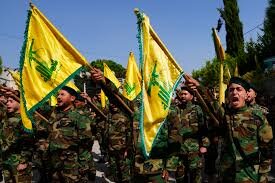Hezbollah’s unbreakable solidarity with Gaza
200 days after the Lebanese resistance movement opened second largest front

TEHRAN- One day after Operation al-Aqsa Storm on October 7, Lebanon’s Hezbollah entered the battle in solidarity with Gaza.
The formidable Lebanese resistance movement opened the largest front after Gaza in terms of the scale of operations and the level of sacrifices. After 200 days, the number of Hezbollah fighters who have been martyred has exceeded 300.
The Israeli occupation regime also considers the northern front as the second largest warfront in terms of the effects it has had on the Israeli military and settlers.
The number of Israeli settlers who have been displaced from northern occupied Palestinian territories has caused a huge political headache for the Netanyahu regime.
An estimated one-quarter of a million Israelis are believed to have been displaced from the north as a result of Hezbollah’s operations.
These displaced Israelis have lost trust in their government and are said to no longer believe their leaders can bring them a state of security.
Many have reportedly said they will “leave Israel” if they cannot return to their homes in the north, with some indicating they will not return.
The mayor of Kiryat Shmona has repeatedly condemned the government, complaining about the lack of attention it has paid to bringing back security for the residents of the northern Israeli town.
During the early days of the Israeli war on Gaza, some mocked Hezbollah for firing at Israeli “pillars and poles” on the other side of the Lebanese border.
Military experts say in the first two months Hezbollah wasn’t shooting at “pillars and poles”, but that this phase was the most difficult despite the fact that the Lebanese resistance movement wasn’t targeting Israeli troops and bases or command centers.
Military experts say Hezbollah was putting out of service all Israeli information and sabotage technology, radars, and many other spying and intelligence gathering equipment that the military had carefully planted near the entire Lebanese border.
During this phase, more than 1,700 pieces of Israeli equipment worth a total of more than $1 billion dollars is widely believed to have been put out of service.
This is reported to have included sophisticated Israeli spying systems that the Israeli army used to identify cars at a distance of 40 kilometers and the identity of the vehicle’s registration plate at a distance of several kilometers.
Moreover, the spying technology, destroyed by Hezbollah, allowed the Israeli army to identify the driver’s identity and all their social media accounts, making them liable to assassination by airstrikes.
The second phase that Hezbollah began in December witnessed many operations between five and ten kilometers inside Israel. These destroyed a vast amount of Israeli military positions that the regime’s army had stationed as defensive lines.
It forced the Israeli army to go into hiding.
Today, Hezbollah is engaged with the Israeli military in its third phase, having successfully completed the previous two.
Phase three has seen attacks on the regime’s Meron airbase, the largest in northern Israel, targeting the Ein Zeitim base in Safad along with other major Israeli military bases, including in the occupied Golan Heights.
Experts have pointed out that for the first time, Hezbollah is waging a regular war against an army that possesses one of the most sophisticated weapons in the world.
The Lebanese resistance movement, which isn’t a regular army, has over the past 200 days and counting, fought with a steadfast defensive line.
It has kept that defensive line intact and is targeting the Israeli occupation army, continues to kill and get killed, but without warplanes, tanks, or any other privileges that an army enjoys.
Furthermore, at the heart of this exchange in fire with the Israeli military, Hezbollah is the one that decides the level of exchange.
Hezbollah first chose to hit the occupied Sheba’a Farms and then opened fire across the entire front.
The Israeli military did not strike 2 kilometers inside Lebanon until Hezbollah struck 2 kilometers inside Israel. Likewise, only when Hezbollah expanded to 5 km the Israeli army expanded to 5 km. Hezbollah began striking 7km inside Israel, and then 10km, the Israeli army responded likewise.
When the Israeli occupation forces chose to strike the deepest inside Lebanon, it failed to hit any strategic target. The regime’s military wanted to remind Lebanon it has the capability of striking deep inside the country.
Hezbollah has always struck strategic Israeli sites and has only made exceptions when the Israeli army kills Lebanese civilians.
Furthermore, across the entire Lebanese front, from Naqoura to the Sheba’a Farms, the Israeli army repeats the same military measures. Israeli warplanes are opening fire and drones are used to carry out assassinations. This has been the same cycle of the Israeli army for 200 days.
Hezbollah has done something new, springing the element of surprise with every passing day. It has deployed weapons not used before, firing missiles fitted with cameras that film everything from take-off to direct contact on enemy ground. Footage that Hezbollah is collecting and seeking to gain from.
Other examples include newer missiles on drones, missiles that change direction after being fired, and bringing down the Israeli Hermes 900 drone without revealing which weapon was used to hit the pride of the Israeli weapons manufacturing industry.
200 days and counting and amid all pressure, Hezbollah insists it won’t leave Gaza to fight by itself.
